OnePlus Pad 3 vs OnePlus Pad 2: All the differences explained

Intro
The OnePlus Pad 3 is shaping up to be the brand’s most ambitious mid-range Android tablet yet — and that naturally raises the question: how much of a leap will it be over last year’s already impressive Pad 2?
While the Pad 2 carved out a spot as an affordable yet powerful alternative to big-brand tablets, the Pad 3 looks set to push that formula further with a larger display, bigger battery, and the latest Qualcomm chip.
That said, this is still a pre-release comparison. Most of the Pad 3’s details come from official teasers and leaks, so everything should be taken with a grain of salt until the June 5 announcement.
For reference, the OnePlus Pad 2 launched in 2024 at $550, while the Pad 3 is expected to land between $599 and $649. Early pre-orders are rumored to include perks like a free keyboard or stylus, sweetening the deal for first buyers.
That said, this is still a pre-release comparison. Most of the Pad 3’s details come from official teasers and leaks, so everything should be taken with a grain of salt until the June 5 announcement.
So, with such an aggressive package from the get-go — will the new model be worth the upgrade?
OnePlus Pad 3 vs OnePlus Pad 2 expected differences explained:
| OnePlus Pad 3 | OnePlus Pad 2 |
|---|---|
| 13.2" LCD, 144Hz | 12.1" LCD, 144Hz |
| Snapdragon 8 Gen 3 “Elite” | Snapdragon 8 Gen 2 |
| 8 to 12 GB RAM | 8 GB to 12 GB RAM |
| 12,140 mAh battery | 9510 mAh battery |
| ~$599–$649 (expected) | $550 starting price |
Design and Display
Bigger and thinner
The OnePlus Pad 2 comes with a sleek aluminum frame with soft rounded edges and a minimalist look. It measures 6.5 mm thick and weighs 584 g, making it slightly heavier than some competitors in the same size class.
The power button, volume rocker, and stylus charging strip on the Pad 2 are all positioned for landscape-first use, with pogo pins for the keyboard connector on the bottom edge.
The Pad 3 is expected to take this same design and scale it up. According to leaks, it will feature an even thinner 6.0 mm chassis, while still retaining the aluminum build. That means it could be heavier.
The Pad 3 is expected to take this same design and scale it up. According to leaks, it will feature an even thinner 6.0 mm chassis, while still retaining the aluminum build. That means it could be heavier.
Unfortunately, we still don't know anything about water resistance or durability certification.
In terms of screen quality, the Pad 2 impressed us with its 144Hz LCD panel, decent brightness (786 nits in our tests), and smooth scrolling. Colors weren’t the most accurate, but contrast and sharpness were perfectly acceptable for regular media content and casual work.
The Pad 3 is expected to keep the IPS LCD tech and 144Hz refresh rate, though now on a much larger panel, and reportedly with support for Dolby Vision.
Keyboard and Stylus
The Pad 2 supports a Smart Keyboard accessory that magnetically attaches via pogo pins and charges through the tablet itself. It’s well-built, with spacious keys, a large trackpad, and gesture support. Sold separately for $150, it's a must-have for productivity.
The Stylo 2, OnePlus’ smart stylus, comes with 16,000 pressure levels, Bluetooth connectivity, and magnetic charging. It costs $99 and supports remote gestures like scrolling or advancing slides.
The Stylo 2, OnePlus’ smart stylus, comes with 16,000 pressure levels, Bluetooth connectivity, and magnetic charging. It costs $99 and supports remote gestures like scrolling or advancing slides.
Both accessories magnetically snap onto the frame, though there’s still no dedicated silo for the stylus.
The Pad 3 will most likely support the same accessories or updated versions of them—and this time, early buyers in the U.S. can get both the keyboard and stylus for free with pre-orders. That makes the Pad 3 bundle especially attractive out of the gate.
The Pad 3 will most likely support the same accessories or updated versions of them—and this time, early buyers in the U.S. can get both the keyboard and stylus for free with pre-orders. That makes the Pad 3 bundle especially attractive out of the gate.
Performance & Benchmarks
More power and hopefully better tuning
However, synthetic benchmarks told a different story, with unexpectedly low single-core scores (~931 in Geekbench 6), likely due to thermal throttling or software tuning.
Still, gaming and multitasking were handled well, and the Pad 2 was generally smooth in everyday use.
The Pad 3 is expected to upgrade to the much more powerful Snapdragon 8 Elite, Qualcomm’s top-tier mobile chip, in 2025. Hopefully, the new model doesn't suffer from the same throttling issues we saw in the Pad 2 and the new chip can be utilized to its maximum potential. For reference, this is the same silicon that the Galaxy S25 Ultra uses.
Still, gaming and multitasking were handled well, and the Pad 2 was generally smooth in everyday use.
The Pad 3 is expected to upgrade to the much more powerful Snapdragon 8 Elite, Qualcomm’s top-tier mobile chip, in 2025. Hopefully, the new model doesn't suffer from the same throttling issues we saw in the Pad 2 and the new chip can be utilized to its maximum potential. For reference, this is the same silicon that the Galaxy S25 Ultra uses.
Rumors suggest 12 GB of RAM again, which should still offer ample memory for demanding apps and multitasking. Storage configurations are unconfirmed, but microSD expansion is not expected, just like on the Pad 2.
The Pad 2 came out with OxygenOS 14, based on Android 14, and it has now transitioned to Oxygen OS 15. It’s a near-stock experience with a few customizations, including:
It’s lightweight, fast, and well suited for productivity.
The Pad 2 features a 9510 mAh battery, and in our tests, it held up well:
Charging is where it excels—67W fast charging fills the battery in just 52 minutes, with 35% charged in 15 minutes. That’s much faster than most tablets.
The Pad 3 is expected to bump battery capacity to 12,140 mAh, while retaining 67W wired charging. If true, this should deliver longer battery life, although it could increase the charge time since there will be more battery to fill.
The Pad 2 has a 13 MP rear camera and 8 MP front camera, neither of which deliver standout results. Photos are passable in good light, but lack dynamic range and detail. Video recording tops out at 4K 30fps, and it’s fine for occasional clips or video calls.
The Pad 3’s camera setup hasn’t been detailed yet, but there’s been no indication of major upgrades. It’s safe to assume the same or similar hardware, which is acceptable for a tablet, but not noteworthy.
Software
The Pad 2 came out with OxygenOS 14, based on Android 14, and it has now transitioned to Oxygen OS 15. It’s a near-stock experience with a few customizations, including:
- Split screen and floating windows
- Smart Sidebar for quick app access
- Open Canvas multitasking (expected to return on Pad 3)
It’s lightweight, fast, and well suited for productivity.
OnePlus hasn’t confirmed a long-term update policy for the Pad 3. The Pad 2 should get 3 years of major OS updates and 4 years of security patches, so the Pad 3 may follow suit unless OnePlus announces otherwise.
No DeX-like desktop mode is available, but the clean UI combined with the keyboard and stylus makes for a decent laptop replacement for most workflows.
No DeX-like desktop mode is available, but the clean UI combined with the keyboard and stylus makes for a decent laptop replacement for most workflows.
Audio Quality
The Pad 2’s six-speaker system was one of its standout features. It gets loud, maintains clarity at high volumes, and produces satisfying bass—all without distortion. The chassis even subtly vibrates when cranked up, adding to the immersion.
The Pad 3 is expected to retain the same six-speaker layout, and if tuning is improved further, it could be one of the best sounding tablets in its class.
There’s no 3.5 mm headphone jack on the older model so we don't expect one on the new one either. The Pad 2 supported 24-bit Hi-Res audio via USB-C, which should carry over to the Pad 3.
There’s no 3.5 mm headphone jack on the older model so we don't expect one on the new one either. The Pad 2 supported 24-bit Hi-Res audio via USB-C, which should carry over to the Pad 3.
Haptic feedback wasn’t a highlight on the Pad 2, and there’s no reason to expect major changes here.
Battery and Charging
The Pad 2 features a 9510 mAh battery, and in our tests, it held up well:
- 10h 43m browsing
- 6h 42m gaming
- 4h 44m video playback (disappointingly low)
The Pad 3 is expected to bump battery capacity to 12,140 mAh, while retaining 67W wired charging. If true, this should deliver longer battery life, although it could increase the charge time since there will be more battery to fill.
Camera
About what you would expect
The Pad 2 has a 13 MP rear camera and 8 MP front camera, neither of which deliver standout results. Photos are passable in good light, but lack dynamic range and detail. Video recording tops out at 4K 30fps, and it’s fine for occasional clips or video calls.
Summary
The OnePlus Pad 3 is shaping up to be a meaningful step forward from the Pad 2. With a larger 13.2-inch display, a next-gen Snapdragon chip, a bigger battery, and bundled accessories, it’s clearly targeting buyers who want both power and value in one package.
That said, the Pad 2 still holds its ground in 2025 — especially if you don’t need the larger screen or already own the add-ons. If OnePlus keeps the Pad 3 in the $599–$649 range and delivers strong performance tuning, it could easily become one of the best all-around Android tablets of the year.
That said, the Pad 2 still holds its ground in 2025 — especially if you don’t need the larger screen or already own the add-ons. If OnePlus keeps the Pad 3 in the $599–$649 range and delivers strong performance tuning, it could easily become one of the best all-around Android tablets of the year.
Follow us on Google News



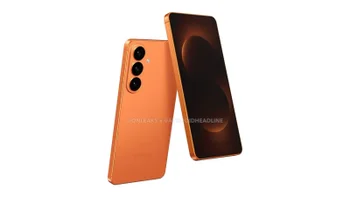




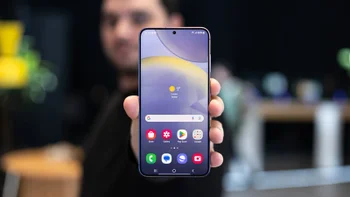

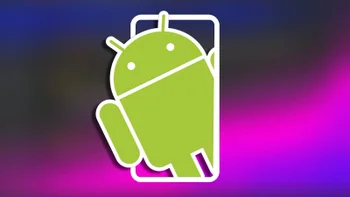
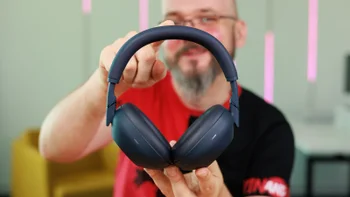
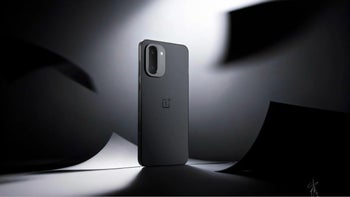
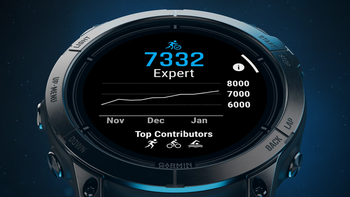
Things that are NOT allowed:
To help keep our community safe and free from spam, we apply temporary limits to newly created accounts: